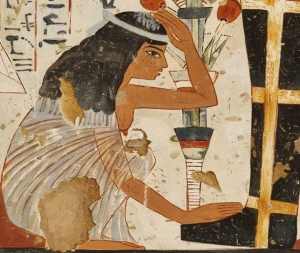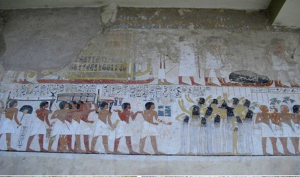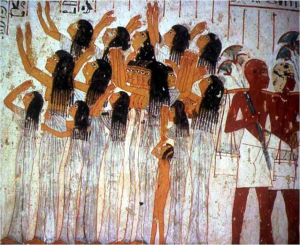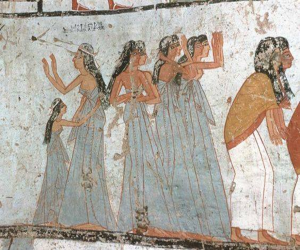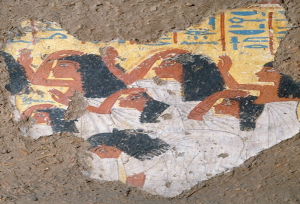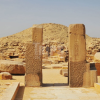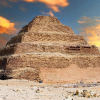departing of Loved Ones
The ancient Egyptians had a deep and profound connection with the dead. they believed that the dead lived in the afterlife (the eternal world) and that in that world they were better off than in the world of the living. The Egyptians always tried to draw closer to the dead. At the time of burial, they would mourn their dead with weeping. The ladies would strike their faces and weep over the deceased, sitting around his grave and remembering his good deeds. For the Egyptians, the dead have always held the greatest sanctity. When someone died, and after mummification, he would be given a final look. One of the most beautiful scenes that represent this is the tomb of Nebamun from the 18th dynasty in West Thebes. We find Nebamun’s daughter weeping over him in a scene that evokes pity and shows the extent of her sadness.
Nebamun’s daughter at her father’s tomb
Messages to the Dead
The ancient Egyptians would visit the deceased, especially on the anniversary of their death. They would also visit the deceased on a specific day of the week to offer sacrifices to the dead and the gods, a custom that still exists today. They also send messages to the dead, either written on papyrus or shards and placed at the deceased’s tomb. As they believe that the spirit of the deceased could read these messages and inform the deceased that their loved ones remembered them and wished them a happy afterlife. T these messages were sometimes requests for help from the deceased, as they believed that the deceased was in a better world than ours and could therefore help them. In the Greco-Roman era, the living would visit the dead, eat at their tombs, and wash their dishes afterwards. This is why we have found many ceramic vessels in Egyptian tombs from the Greco-Roman period. Sadness was closely associated with the mourners (Isis and Nephthys) in ancient times. Many tombs depict scenes of mourning. One of the finest examples of ancient Egyptian wall paintings depicting grief is found in the tomb of Ramose, where scenes of mourning and funeral processions are vividly portrayed. -scenes of mourning and funeral processions in Ramose’s tomb
A scene of women weeping and wailing over the deceased from the tomb of Ramose
A scene of women weeping over the deceased from the tomb of Ramose
A scene of women weeping over the deceased from the tomb of Ramose


